Though my taste in manga is very particular, I’m much less discriminating in my reading habits. My willingness to try anything has yielded some wonderful surprises: Ai Morinaga’s Duck Prince, Taiyo Matsumoto’s No. 5, Shioko Mizuki’s Crossroad, Kazuo Umezu’s Scary Book, Motofumi Kobayashi’s Apocalypse Meow. The flipside of being a gourmand is that I’ve encountered my share of truly dreadful stuff, too — the kind of manga with such incoherent plots, unappealing characters, clumsy artwork, and tin-eared dialogue that they beg the question, Who thought this was a good idea?
Now that I’d donned my flame-proof pants, here are my candidates for the Manga Hall of Shame:
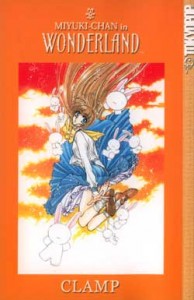 10. Miyuki-chan in Wonderland
10. Miyuki-chan in Wonderland
By CLAMP • Tokyopop • 1 volume
I’ve read my way through the highs and lows of the CLAMP canon, from the Gothic angst of Tokyo Babylon to the cutesy antics of Kobato, and can say with great confidence that this odd one-shot represents the nadir of this talented quartet’s work. Miyuki-chan probably sounded like a great idea on paper: a young girl falls down a hole and finds herself in a sexed-up version of Lewis Carroll’s famous story. Unfortunately, the story bears almost no resemblance to Carroll’s original; Miyuki-chan is really just a pretext for CLAMP to draw scantily-clad beauties engaging in vaguely naughty behavior, usually by making a pass at Miyuki or inviting her to play strip poker. The stories are short and repetitive, barely spanning 100 pages in total, and are so inane that they don’t work as pornography or parody.
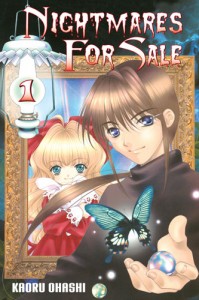 9. Nightmares for Sale
9. Nightmares for Sale
By Kaoru Ohashi • Aurora Publishing • 2 volumes
The premise of Nightmares for Sale is pure comeuppance theater: in exchange for having their dearest wishes granted – in this case, by the proprietors of Shadow’s Pawn Shop – bad people receive their just desserts. For this old-as-the-hills premise to succeed, three basic conditions need to be met. First, the audience needs to understand the subject is unrepentantly bad and not merely flawed or misguided. Second, the audience needs to see the chain of decisions that lead to the subject’s downfall. And third, the punishment needs to fit the crime. Alas, manga-ka Kaoru Ohashi doesn’t satisfy these basic criteria in Nightmares for Sale. A few characters get what they deserve, but many of the stories are sloppily executed; we don’t learn how or why the subject is being punished until Shadow appears at the end of the story to tell us. By far the worst chapter is “Children of Darkness,” in which a woman is tormented by the spirit of her unborn child. No matter what your personal convictions on abortion, the story is both macabre and misogynist, and shows an astonishing lack of compassion for the subject’s situation. Not even the artwork can redeem this clunker: it’s both busy and generic, a hot mess of awkwardly posed bodies and poorly applied screentones. (Review originally posted at PopCultureShock, 11/28/07)
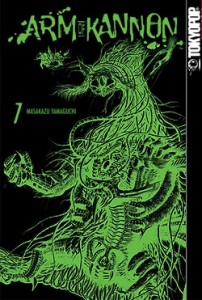 8. Arm of Kannon
8. Arm of Kannon
By Masakazu Yamaguchi • Tokyopop • 9 volumes
After a nearly three-year absence, archaeologist Tozo Mikami returns to his family with a mysterious object in tow: the Arm of Kannon, an ancient Buddhist relic that, unbeknownst to Mikami’s son Maso, is a parasitic weapon that feeds off its host’s life force while transforming him into a tentacled killing machine. Before we’re too far into volume one, the Arm of Kannon destroys Tozo, choosing Maso as its next host. What follows is an unholy marriage of gore, mystical mumbo-jumbo, and military conspiracy theories, as Maso rapes and dismembers people, gets captured by an army contractor, then kills some more. A third-act detour into the distant past adds unnecessary complications to the plot; it’s as if Yamaguchi got bored with his characters but realized that he hadn’t quite resolved things enough to simply end the story. The art is incredibly detailed, which is a mixed blessing: if you like your entrails rendered with anatomical specificity, Arm of Kannon might be your cup of tea. Anyone in search of a coherent plot or sympathetic characters, however, is advised to look elsewhere.
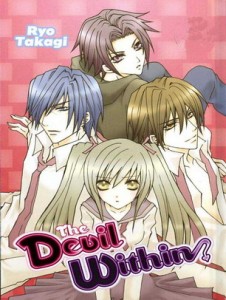 7. The Devil Within
7. The Devil Within
By Ryo Takagi • Go! Comi • 2 volumes
If 98.7% of shojo heroines are kind, smart, enthusiastic, and/or sincere—read likeable—Rion, the sixteen-year-old heroine of The Devil Within is a rare outlier: she suffers from a full-on shota complex that makes her seem mentally unbalanced. Forced into choosing among three prospective fiances (all adults), Rion instead pins her hope on a young neighbor who happens to be a fifteen-year-old trapped in a five-year-old’s body. Making this whole distasteful concept even more unpalatable is the way in which manga-ka Ryo Takago treats the principle character; Rion endures truly grotesque forms of abuse from her suitors that results in her abject humiliation. Hats off to anyone who made it through the first volume without squirming — I couldn’t.
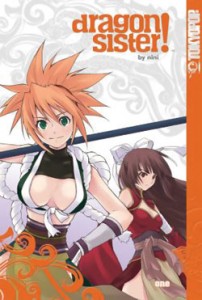 6. Dragon Sister!
6. Dragon Sister!
By Nini • Tokyopop • 2 volumes
Buried beneath the slapstick, speedlines, and extreme mammary close-ups is an intriguing premise: what if ancient China’s greatest warriors were, in fact, women? Dragon Sister! begins around 184 AD, when three brothers—Zhang Jiao, Zhang Bao, and Zhang Liang—acquire a set of magical scrolls capable of granting any wish. In their desire to overthrow the Han Dynasty, the brothers pray that no more heroes will be born. Their scheme backfires, however, transforming them into a cabal of power-hungry girls. As the country descends further into chaos, young nobleman Liu Bei forms a volunteer army to oppose the Zhangs, recruiting two busty babes, Zhang Fei and Guan Yu, to aid his cause. None of this is explained very clearly—we never have a sense of who the various factions are, or why Liu Bei remains faithful to a corrupt emperor. Instead, Nini treats us to a seemingly endless parade of costume failures, crude jokes, and scenes of predatory lesbianism, all delivered in speech that vacillates between present-day dudespeak and wuxia film formality. Strictly for the fanservice crowd. (Review originally posted at PopCultureShock, 11/2/08)
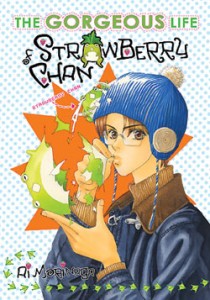 5. The Gorgeous Life of Strawberry-chan
5. The Gorgeous Life of Strawberry-chan
By Ai Morinaga • Media Blasters • 2 volumes
I didn’t think it was possible to dislike anything by Ai Morinaga, but this sadistic boarding-school comedy proved me wrong. There’s no real story here; most of the “action” revolves around Akiyoshi, a fatuous pretty boy, and Strawberry-Chan, his talking frog. Akiyoshi delights in torturing his pet, squashing Strawberry-Chan, burying him alive, and even inflating him like a balloon via a well-placed straw. (If Morinaga is trying to make a greater point with her hero’s perverse antics, I can’t imagine what it is.) Adding insult to injury is the art, which is a riot of misapplied screentones, clashing patterns, and extreme facial close-ups—it’s the best representation of a migraine I’ve ever seen committed to paper, but some of the worst sequential art I’ve seen, period. (Review originally posted at PopCultureShock, 5/31/08)
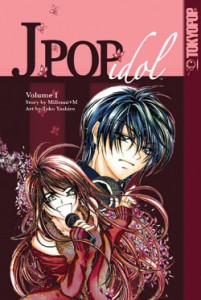 4. J-Pop Idol
4. J-Pop Idol
Story by MILLENNI+ M, Art by Toko Tashiro • Tokyopop • 2 volumes
Until Tokyopop releases a Glitter Cinemanga, otaku eager for overripe musical drama will have to content themselves with J-Pop Idol. But unlike Glitter, which is bad in a jaw-dropping, can’t-take-my-eyes-off-it way, J-Pop Idol is just plain bad. A big part of the problem is the story, which has been hastily cobbled together from dozens of similar, Star Is Born narratives–so hastily, in fact, that many scenes feel like complete non-sequitors. One of the most egregious examples can be found in the very first pages, when the members of an up-and-coming girl group face a test of their friendship: after winning a major talent competition, only one of them is singled out for a recording contract. From the context, however, it’s impossible to see why producers chose Maki over band mates Kay and Naomi, as Maki lacks the charisma, talent, and sex appeal that distinguished Diana Ross from her fellow Supremes.
The rest of volume one charts Maki’s attempt to build a recording career under the tutelage of handsome idol Ken, who motivates his protege with tough talk and hard lessons. There’s also a subplot involving tuberculosis that might not seem out of place in a Joan Crawford weepie, but seems downright ludicrous in a manga aimed at a teenage audience. The bottom line: J-Pop Idol may have been a “#1 hit mobile manga in Japan,” but that endorsement carries about as much weight as Paula Abdul’s enthusiastic cheerleading on American Idol. (Review originally posted at PopCultureShock, 3/10/08)
 3. Seraphic Feather
3. Seraphic Feather
Art by Hiroyuki Utatane • Story by Yo Morimoto and Toshiya Takeda • Dark Horse • 6 volumes
Seraphic Feather has three strikes against it: an overly fussy plot, tin-eared dialogue, and lousy artwork. The story revolves around the discovery of an alien spaceship on the far side of the Moon. Various Earthly factions compete for the downed ship, hoping to unlock its powers using the Emblem Seeds, a high-protein energy bar a mysterious power source. Running in tandem with the main plot are a love story between a young man named Sunao and his childhood friend Kei — who mysteriously re-appears after dying in an explosion on the Moon — and a subplot involving Kei’s brother Apep, who mysteriously sprouts a pair of wings. Making these baroque plot twists harder to take is the dialogue, all of which sounds like it was pilfered from an episode of Mystery Science Theater 3000. The frosting on the cake, however, is the art: Hiroyuki Utatane seems more interested in drawing buxom girls and explosions than advancing the plot. Though characters yell and grab each other by the arm on almost every page, the story is dead in the water long before the end of volume one. Anyone who finds the cover art sexy will find the actual story an even bigger let-down, as it’s much tamer than the bustier and riding crop might suggest.
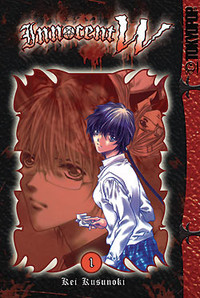 2. Innocent W
2. Innocent W
By Kei Kusonoke • Tokyopop • 4 volumes
I can’t decide if Kei Kusonoke is exceptionally efficient or just plain disgusting. To wit: on the very first pages of this three-volume series, she treats us to a panty shot of a girl with a gruesome injury. Things don’t improve much from there, as the story quickly devolves into a Wiccan Battle Royale, pitting a group of young witches against an assortment of sadistic weirdos in a remote, wooded area. The hunters rape, torture, and mutilate the young women for sport, leaving a trail of dismembered corpses in the forest before the survivors gain the upper hand. Perhaps more disturbing than the actual story is the artwork. Kusonoke lavishes considerable attention on the characters’ costumes and hairstyles, but can’t be bothered to endow their faces with any expression; it’s as if the entire cast consumed large amounts of valium right before the mayhem began. They look bored. Funny, I was too…
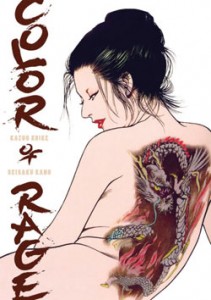 1. Color of Rage
1. Color of Rage
Story by Kazuo Koike • Art by Seisake Kano • Dark Horse • 1 volume
First published in 1973, this historical drama plays like a mash-up of The Last Samurai, Rush Hour, and Mandingo. The story begins in 1783, when a whaling ship goes down off the coast of Japan. Two men — George, who’s Japanese, and King, who’s African-American — wash ashore, cut off their shackles, and head inland, only to discover a landscape populated by unscrupulous samurai and feudal lords who hold the peasants in thrall. For such a far-fetched premise to work, its principal characters’ thoughts, words, and actions need to make sense in historical context. Yet George and King behave like two modern action heroes deposited in feudal Japan, not two products of the eighteenth century; it wouldn’t be much of a stretch to imagine John Cho and Will Smith slashing and wise-cracking their way through a big-screen adaptation. Making things worse are several scenes of brutal misogyny — what the editors euphemistically call “pulpy sexiness” — that are made all the more cringe-worthy by the unexamined racial stereotypes on parade. Kazuo Koike is always pushing the boundaries of good taste — that’s part of what makes Crying Freeman and Lady Snowblood so much fun — but Color of Rage sails way over the line and keeps on going. (Review originally posted at PopCultureShock, 5/18/08)
* * * * *
I’ll be the first to admit that this list reflects my own biases. I don’t have much patience for fanservice, sadism, or gore for gore’s sake; if I’m going to be treated to dismembered bodies and panty shots, there needs to be a story and some memorable characters for me to be on board with it. I realize that some folks don’t feel the same way as I do, and that’s OK. There’s plenty of room for all of us under the manga-loving tent, even if we can’t agree on whether Arm of Kannon is awesome or awful. (In other words: hate the manga, not the critic.)
So what manga belong on your all-time worst list and why? Inquiring minds want to know!
POSTSCRIPT, 9/28/09: Over at Okazu, Erica Friedman posts her Yuri Manga Hall of Shame, five blisteringly funny critiques of books like Suzunari and Alice on Deadlines. Go, read, and be glad you dodged a 4-koma manga about cat clone twincest.
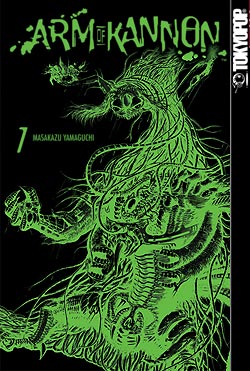

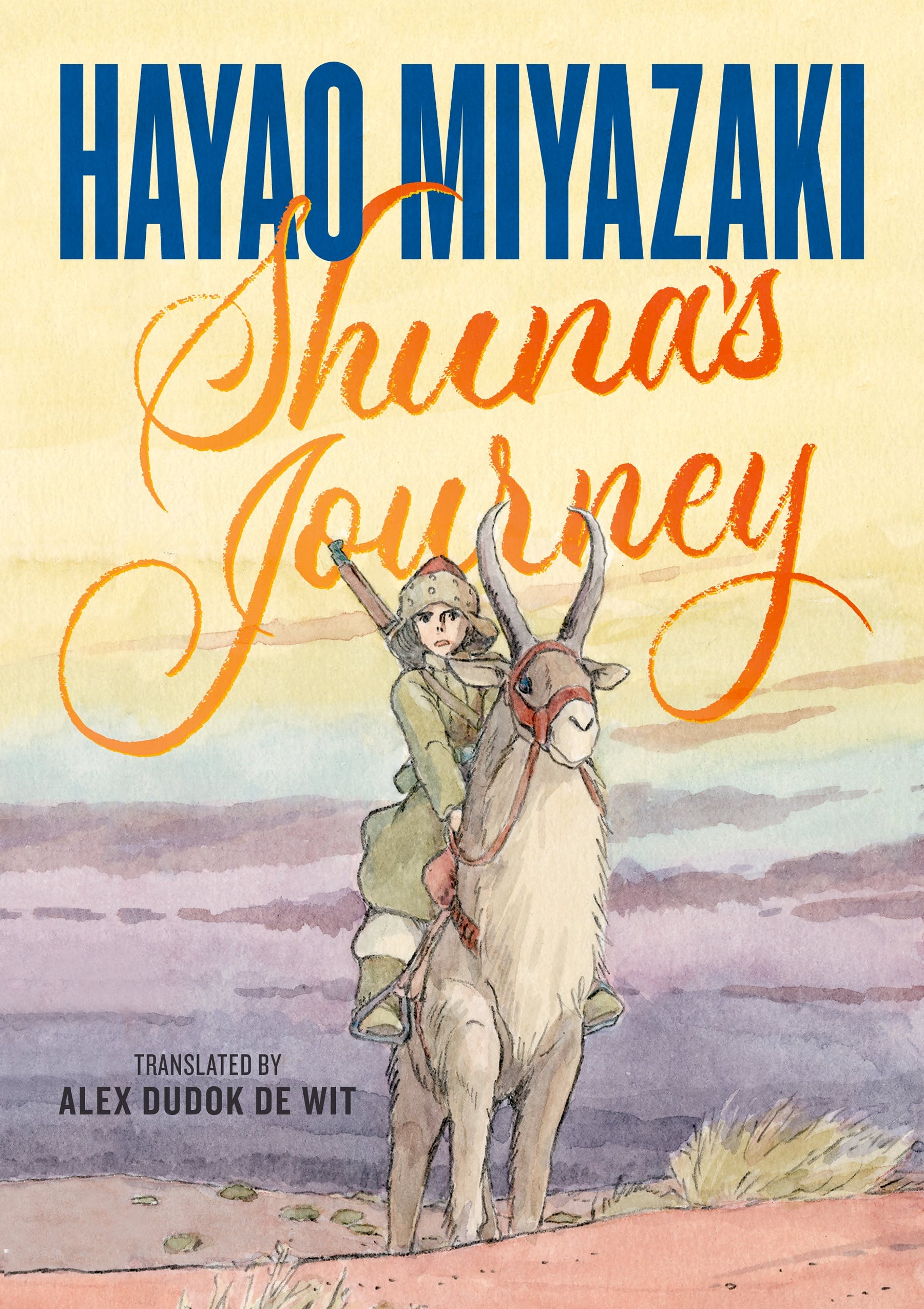
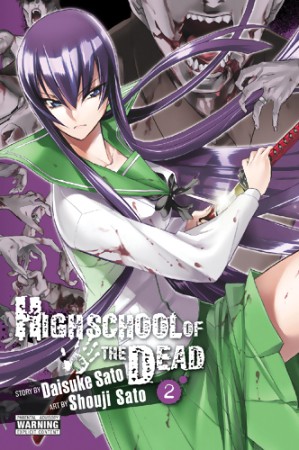
Anna says:
I’ve thankfully managed to avoid a lot of the manga on this list, but I agree about Miyuki-Chan and The Devil Within. I thought Strawberry Chan was funny though 🙂
Katherine Dacey says:
I know I’m in the minority with Strawberry-Chan; I remember reading many positive reviews of the series when it debuted back in 2008. De gustibus non est disputandum, I guess! As for Miyuki-chan and The Devil Within… well, maybe we can warn a few unsuspecting souls from running aground on those rocks, eh?
Thanks for stopping by!
Lissa says:
I love Mikyuki-chan in Wonderland (also a hardcore CLAMP fan), I enjoyed Nightmares for Sale (and lament no more volumes have come out) and thought all three volumes of Innocent W were pretty good.
That said though, Colours of Rage certainly had its flaws, I read Seraphic Feather years ago but you echo what I remember, and I haven’t read any of the others on the list (guess it’s better that way!). I’m not a fan of shame lists but I did enjoy reading your short critiques of the series down points; nicely summarized thoughts.
Katherine Dacey says:
That’s what’s so fun about this conversation — I love comparing notes with fellow bloggers, especially when I’ve read and enjoyed their reviews! It’s always interesting to see where tastes diverge.
Michelle Smith says:
The only one of these that I’ve read is Miyuki-chan, but you sum it up perfectly. I don’t even think I own it anymore.
David Welsh says:
I tend to have more vivid memories of bait-and-switch titles… ones that offered a solid first volume, deceived me into buying the second, and then turned into something perfectly dreadful or baffling. Papillon and Eerie Queerie leap to mind as examples of this. I know I’ve read my share of awful or baffling manga, but I must have really good defensive mechanisms that delete memories of them, like some kind of spam filter.
Oh, wait… Gakuen Prince. I really hated that comic right from the start.
Erica Friedman says:
“we never have a sense of who the various factions are, or why Liu Bei remains faithful to a corrupt emperor”
Yeah, well that was unclear in the original “Romance of the Three Kingdoms, ” too so I can’t blame the managaka for that.
Great post, Kate – now I’ll have to pick the top worst and worst/best Yuri manga or I’ll feel left out. 🙂
Cheers,
Erica
Hungry for Yuri? Have some Okazu!
http://okazu.blogspot.com
Katherine Dacey says:
@Michelle: It’s a really odd little book, isn’t it? I’m usually willing to cut CLAMP slack (Chobits, The One I Love), but Miyuki just didn’t work for me.
@David: I’m thankful I didn’t read Gakuen Prince, as it sounded like the kind of mean-spirited comedy that relies heavily on humiliating its sad-sack protagonist over and over again. Not really my thing. I haven’t read Papillon or Eerie Queerie, but from what you say, it sounds like I dodged some bullets.
Michelle Smith says:
@David Oh, yes, I agree entirely about Papillon! I’m waiting for it to get good again, but it is just getting more mired in wrongness.
I did read Eerie Queerie back in the day, but remember almost nothing about it now. I’ve steered clear of Gakuen Prince entirely, thank goodness.
Katherine Dacey says:
Thanks for stopping by, Erica, and sorry your comment got snagged by my spam filter! I’m really looking forward to reading your list. I have no doubt it will contain some doozies!
Lianne says:
Gonna add that I love Strawberry-chan…even if it’s definitely not Ai Morinaga’s most insightful work. But I also really like seeing her draw crude insanity with no checks, so I’m biased.
Worst manga I ever read was a manhwa, actually – Soul to Seoul. If I had to go specifically with Japan, though, I might choose the manga for Scryed (despite its very entertaining anime). Or Tea for Two, the yaoi that magically managed to use nothing but cliches and still be completely incoherent. Or Eiken, the porn that can’t even manage to draw bodies that aren’t horrible.
David Welsh says:
Oh, manhwa hate! You triggered memories of Honey Mustard, the deeply horrible arranged-marriage romance comedy, Lianne.
Katherine Dacey says:
@Lianne: I deliberately excluded manhwa, as my list would have been pretty unwieldy. But yes, I’ve read my share of really awful manhwa, too, the nadir of which was Star Project Chiro, an utterly incoherent story about idols in which all the characters had giraffe-like necks and terrible fashion sense. I felt the same way about Pig Bride, but like Strawberry-chan, my negative assessment puts me in the minority.
@David: I don’t like honey mustard as a condiment, so I stayed away from that one on principal.
MegaHentai says:
Miyuki-Chan wasn’t all that great, but the omake section was fascinating to me — it’s basically the CLAMP gals copping to being closet lesbians.
Color of Rage is clumsy by Western standards, but my understanding is that Japan has always regarded black people as barely human and has only seen change on that front in the past few years. By those lights, Color of Rage is actually pretty progressive.
Diana Dang says:
Haha, I actually liked The Devil Within because of the eyecandy, lulz. But I am pretty pissed that it’s not a proper plot because it can go far. Although it’s your 2nd worst, I really like Innocent W. I always found the mangaka’s horror works to be interesting.
Katherine Dacey says:
I’ve definitely read manga where the omake were better than the main attraction; Chika Shiomi’s Queen of Ragtonia comes to mind as an example of a story that was outclassed by the extras. I must admit that it’s been a while since I looked at the extras in Miyuki-chan; they didn’t really leave an impression on me one way or the other.
As for Color of Rage, I think you’re right that Koike was trying to portray King in a favorable light, but because Koike was relying on American films, books, music, etc. for his information about black culture — rather than historical knowledge or personal experience — the results were pretty squirm-inducing.
Michelle Smith says:
Aw, poor Pig Bride getting the hate. 🙂 I think maybe the worst one I’ve read is Moon Boy, which is just barely coherent but still largely unappealing.
Katherine Dacey says:
@Diana Don’t get me wrong; I like eye candy, I just prefer it in the context of a good story, that’s all. I know that a lot of folks like Innocent W, too — as I stated above, this list is very, very subjective and reflects my own biases. I’m sure there’s someone out there who feels as strongly about InuYasha or Goong as I do about Color of Rage. That’s what’s so great about the manga community: everyone can find something that speaks to her own individual taste.
I’m curious: what would make your worst-of list?
Katherine Dacey says:
@Michelle: Is Moon Boy bad? It has such beautiful covers I almost read it, but I trust your judgment — if you say, “Blech!”, there’s an excellent chance I’ll feel the same way, too.
Joe H says:
Half of it is Tokyopop and it doesn’t surprise me in the least. And it’s why I tend to stay away from Tokyopop. I’m sure they put out some decent material, but everything I have picked up from them tend to be light fluff material with basic art, generic character designs, and cookie-cutter plots.
Gore and fanservice don’t bother me (separately they don’t) if done well, but very few manga are able to pull off sadism without seeming to glorify it.
michael says:
There are more disturbing/odd/gross/perverted manga, than anyone can imagine!!
You sir, have only touched the tip of this subject! 😉
Katherine Dacey says:
@Joe H: I’ve bought fewer and fewer Tokyopop titles over the last two years, largely because their books skew a little too young for my tastes. A girl can only read so many generic high school romances and supernatural thrillers, you know? It’s a shame, because Tokyopop’s back catalog contains some incredible material. At least they saved Suppli from the scrap heap.
@michael: The fact I can’t read Japanese is probably protecting me from many of those titles.
Tim Ervin says:
As the editor of both Seraphic Feather (series) and Color of Rage, I find this review absolutely awesome. I will take issue with one matter. The feudal period of Japanese history carried on until about 1890 or so, around the same time my house was built (in Portland, OR.). Slave trade via ship traffic started way before that, and actually still goes on today. However, Japan and the American south are quite a gigantic shipping distance apart, especially given Panama wasn’t open until 1915, so I’ll give you that. I assume that Mr. Koike intended to show how slavery and a fallen samurai can relate to each other in the midst of time’s turmoil. And as we all know, historical works do not necessarily reflect today’s sensitivity. That doesn’t mean the book itself should be unpublished, untranslated. A voice is a voice. I stand behind both series and enjoyed working on them, but separated from my duties, I love to read the well-written opinions of readers, so thanks.
Tim Ervin says:
P.S. I’m pretty sure the worst “manga” ever written was drafted by an American otaku at some point. It would be self-published and probably be anamorphic, erotic (at least to the artist and his or her friends), and god willing it would include some form of tentacle dirtiness and impossible motorcycles.
Jen says:
The worst manga I ever read was Hot Gimmick, because the main character’s romantic options are her adoptive brother, the guy who hits her and the guy who tried to organise for her to be gang raped. It was horrifying.
Katherine Dacey says:
@Tim: Thanks for adding your voice to the conversation, and for having a good sense of humor about it! You’re right about Rage; I don’t doubt Koike’s sincerity when he wrote it. But as someone with a degree in American History, I’m sure you can understand why it raised some red flags for me.
As for global manga, I felt that I’d be shooting fish in a barrel so I confined my list to licensed titles. (For every Nightschool or 12 Days, there’s a Manga Bible and six bad imitations of Evangelion.) I do like the idea of an anamorphic hero riding a ridiculous motorcycle with tentacle streamers, though. That has potential!
@Jen: Hot Gimmick! How could I have left that one off my list?!
Michelle Smith says:
Probably the most frustrating thing about Moon Boy is that it could’ve be good if it had decided what it wanted to be before it actually began. The more serious moments are decent enough, but the so-called comedy is positively banal. Elements of the story get changed as it suits the author, and the lead guy’s personality goes through a few incarnations before it finally settles on one. It’s an inconsistent mess for a while, but by vol. 6 (the latest one available here) looks like it might’ve found its feet at last.
Kris says:
Wow, what a topic and I loved reading through the responses! Most of the titles that you featured are titles that I haven’t read and it sounds like I’m better off. Nightmares for Sale was definitely one that I could do without (bought it through Aurora’s fire sale deal), and The Devil Within had so much promise but did fall flat. Though when it comes to Gakuen Prince I initially didn’t like it but found myself enjoying it after a time. You can only take so much wrist-slitting, soap-opera shojo that a comedic title is rather refreshing.
Since I read mostly yaoi my most hated title is Duetto by Aoi Kujyou. The main story makes no sense whatsoever and then when you throw in a short one shot involving raping your own father it honestly is stomach churning. Regardless of how beautiful the art may seem avoid this title like the plague (and if you don’t like yaoi you’ve probably ignored it anyway!)
Katherine Dacey says:
I’m not a big yaoi reader, which is why I didn’t include any yaoi titles in the list; I just haven’t read enough to have strong opinions on what’s good and bad. But whoa nelly, Kris, Duetto sounds like a prime candidate for the Manga Hall of Shame!
And yes, I agree that all that shojo angst can get stale. My preferred palette cleanser is usually a seinen shoot-em-up, but I can understand the appeal of a snarky shojo parody, too. Thanks for your comments!
Greg McElhatton says:
I’m always relieved to see I’m not the only one who was… less than impressed… with Color of Rage. I actually found myself squirming in my seat when I read it, finishing it only because I wanted to write an informed review so other people who’d liked some other Koike works would know what they were in for.
Jake Forbes says:
As much as I love CLAMP, I cannot defend Miyuki-chan as a stand alone work. As a self-contained volume, it’s pretty awful. The recurring joke would have been all right if spread a chapter at a time as a backup in one of their other series, but reading through that volume is a chore, which is saying something considering how short it is!
The absolute worst manga I ever worked on was probably the shojo adaptation of Corrector Yui. What a stinker! I’ve never cared for Kia Asamiya’s style, but a shojo adaptation of a Kia Asamiya anime — there’s a formula for a turd. A close runner-up would be Fate/Stay Night. Lousy art and a hyper-abbreviated rehash plot of a cliche-ridden video game. Bleh.
voidmare says:
After just looking at the covers, I am amazed that you ever had the notion to open these! Cliche proverbs don´t apply to manga.
Katherine Dacey says:
@Greg: I’m relieved to discover other people felt the same way about Color of Rage, too. After I posted that review, I got a few serious pieces of hate mail from angry Koike fans.
@Jake: Wow, Corrector Yui… now there’s a title I’d erased from my databanks! I had to consult the Wikipedia to remember what it was about—not exactly a sign of a good, original story. I haven’t read Fate/Stay Night, but that’s because I don’t generally seek out manga based on video games.
Katherine Dacey says:
@voidmare: Some of these titles were sent to me as review copies; some were just experiments gone horribly wrong.
Jessica says:
Ooh, coming in late to this, but I had to chime in. (Snarking is too fun, yeah!) Ditto to Hot Gimmick (like the art, hate the “romantic” story…it’s like a how-to manual for passive girls to pick up abusive boyfriends).
Buso Renkin – (I’m just copy/pasting my GoodReads review here, because it pretty much sums up why I hated this manga) A shonen manga with every shonen manga convention imaginable. Mind you, I love shonen manga stereotypes (endless power-ups, plucky hero, etc.), but this is just over the top. Everything feels a bit contrived and some of the designs are pretty ridiculous. For example, I hate Tokiko’s Valkyrie Skirt. And what is up with Papillon, the butterfly guy? By the time you hit volume 5, seeing a bad guy in a Japanese loincloth and buttless chaps can only make you shake your head. Once you get to the ending (why did I read all 10 volumes?!), you’ll see why this series was canceled in Japan.
Rosario + Vampire – Man, I hate this manga. I especially hate how it’s a consistent bestseller. I can handle harem stories, but this one is generic, stupid, and soooo bad. It has an endless litany of “Let’s be friends! Yay!” lines, the typical sad sack main character, lots of fan service, and the same story basically 50 times (monster dislikes main character, monster tries to beat up main character, vampire girl tries to help, main character rips off her cross to power her up, vampire girl beats baddie, everyone talks about being friends, repeat with boobs and panty shots galore)
Psychic Academy (bad plot, bad character designs, and horrid, horrid costume choices). And a few bad non-manga – the manhwa “Kill Me, Kiss Me,” “Pop Japan Travel: Essential Otaku Guide,” and Juror 13 by D.J. Milky (even worse than Princess Ai!)
Katherine Dacey says:
I’m so glad you mentioned Pop Japan Travel, Jessica — that almost made the cut, as it abounded in ugly American stereotypes and Manga 101 explanations of things that one presumably would know if she were going to spend $5,000 on an “otaku tour” of Japan! I haven’t had the pleasure of reading Juror 13, but if it’s worse than Princess Ai… in a word: whoa.
Jessica says:
Juror 13 – It’s like DJ Milky tapped into the crappiest M. Night Shyamalan ending and turned it into a poorly drawn manga!
And do you remember Pop Japan Travel featuring T.M. Revolution and yakuza? (I certainly don’t). What a terrible marketing tool for this tour company. The tagline: “Take our tours to hang out with a bunch of annoying otaku fanboy stereotypes!”
Andrea says:
Innocent W…I read through Volume one and it disgusted me so badly I almost didn’t finish it. For some reason…I bought Volume 2. I guess I thought it might get BETTER. Needless to say I was disturbingly disappointing and immediately removed the books from my collection. So I couldn’t agree with you more!
Katherine Dacey says:
I’m glad to know that I’m not alone in my intense dislike for Innocent W. I was really shocked to see it earned three stars in Manga: The Complete Guide!
Jade says:
Hee, I know exactly what you mean about catching some boots when casting out the manga nets. I’ve thought of picking up about half these books at one point or another and I know I’ve seen sparkling reviews for every one of them, so it’s nice to know they’re flubs.
The only book on the list I’ve actually picked up was Dragon Sister though. I have to say if this really was Dynasty Warriors with fan service, that could make for an entertaining read, but instead, it seems to be more a nostalgic stroll down misogyny lane. In a story that should be about nothing but colourful female warriors in a huge battle royale, you have the heavy hitters swearing fealty to a male lead(?), trading themselves to a tyrant to avoid a big fight(??) and some of the most interesting three kingdoms characters remaining male(???). Within a completely fantastical concept, the author uses the period to justify sexist attitudes that go out of their way to hamper the entertainment value and it came across a lot more offensive to me than the raging pantie shot clinic it could have been.
Paauuu says:
Just one think to say…
The devil within is SHIT!
I’m off
Jessica Nguyen says:
I loved Miyuki-chan in Wonderland, but yes, I am a hardcore CLAMP fan.
CLAMP themselves said that the series was only an opportunity to showcase their sexy female designs, though, and nothing to take seriously.
Katherine Dacey says:
I’d say CLAMP succeeded on that front!
Urban Banshee says:
I’ve read a few of the titles here and I do have to agree with you about all of them.
Miyuki-chan in Wonderland… oh man was that a weird read. Not in a good way either. The anime for it was bad too. Just as boring, and with bland music on top of it to boot. It just felt like an injoke the entire time. Where, It was all just a dream oh wait was it really? is the punchline.
I actually had forgotten about Nightmares for Sale until I saw it here. I think what a lot of episodic manga/anime seem to miss are the central characters that hold up the story. Perhaps that is why I prefer story centric manga when I watch so many episodic live action tv shows. Most of the story of a CSI (pick which ever location NY/Miami/whatever) episode is about the victim and solving the crime, but the characters that solve the crime are interesting and drive me to come back and watch the next episode. Monster or mystery of the week manga/anime on the other hand are all about the monster or mystery to the point the “main” characters are just paper thin props to stand there. I don’t remember most of the solutions or problems for Nightmares are for Sale, but I want to agree with you with the solutions not always fitting the crime. (from what I vaguely remember)
I read assorted chapters of Seraphic Feather out of a magazine that collected a couple different mangas and I remember it being impossible to understand. Not in the “woah what lead up to this” not understanding but where dialoge and actions in a single chapter were just nonsensical.
The last one on this list I’ve read some of was Innocent W. There seemed to be no real story there and just random violence. Also I could never figure out if there was supposed to be real magic involved and they were witches, if only some of them were witches, and heck what did it mean in the story to be a witch. Ugh, the story was just an excuse to have people tear young girls to shreads. Part of me wanted to know how it ended, but I could never find anything beyond volume two. Maybe it was for the best that way.
Curious do you only review/read manga, or have ever picked up a manwha?
Katherine Dacey says:
I do read manhwa—in fact, one of the most popular posts of my site is a list of my 10 favorite Korean comcis: http://mangacritic.com/2010/04/11/10-must-read-manhwa/. When I was a contributor at PopCultureShock, I reviewed a lot more manhwa than I do now, mainly because Tokyopop, UDON, CPM, Ice Kunion, and Dark Horse were all actively licensing Korean properties. It’s a shame that manhwa didn’t catch on with American readers, as I adored titles like Narration of Love at 17, Let Dai, Dokebi Bride, and Shaman Warrior.
Are you also a manhwa reader?
Urban Banshee says:
I like to read whatever I can get my hands on actually. 🙂 Manhwa included. I was curious if you had ever read Operation Liberate Men (review: http://4thwallpwnage.blogspot.com/2011/10/operation-liberate-men-review.html) I often find myself reading obscure comics and can never seem to find others who have read them too. It was mostly my curiousity that caused me to ask. Of course after I asked and browsed this site a bit more I noticed a few manhwa reviews, which made me feel silly for asking.
Katherine Dacey says:
No need to feel silly! There’s nothing on my home page that would indicate that I read/review a variety of comics. I’m actually going through a big Pogo/Wonder Woman phase right now.
And speaking of reviews, your critique of Operation Liberate Men brought back memories! I read the first volume when it was released in 2007, and remember thinking it was a hot mess, for all the reasons you mention in your review. What else did Mira Lee write — Land of the Silver Rain?
SEO Montreal says:
Dude, when I read your articles I just couldn’t keep myself from laughing. I mean you make Simon Cowell look like Ghandi. I applaud you for being very direct and fierce in your reviews, and these mangas definitely need a revamp or better yet just a shredder. LOL